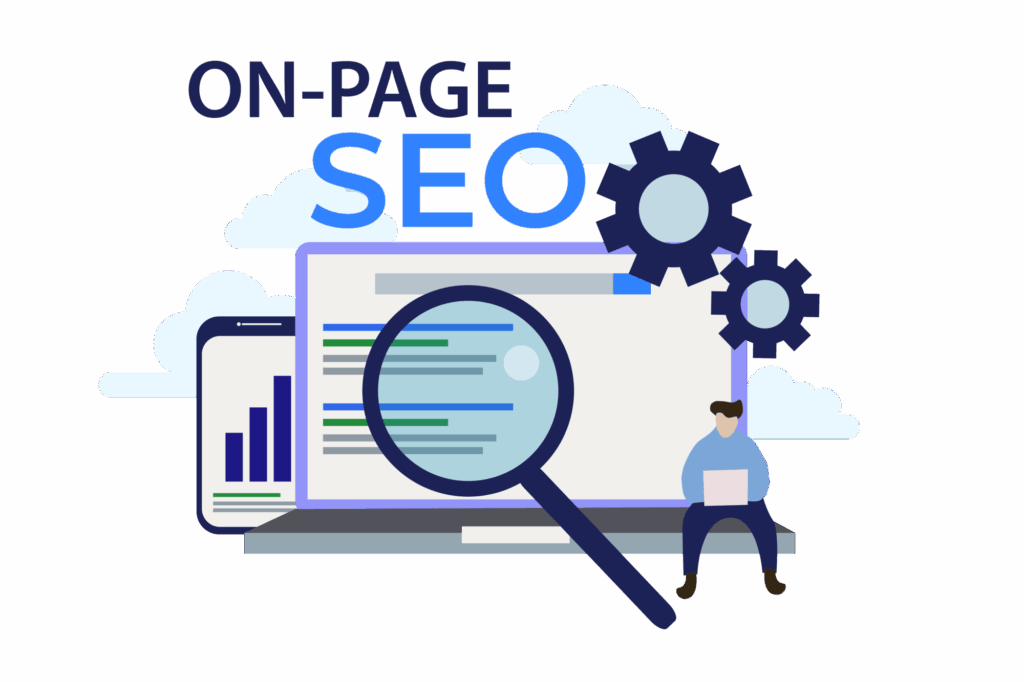In 2025, website optimization isn’t just about ranking high on search engines. It’s about creating a seamless experience for users while also adhering to search engine guidelines. As Google and other search engines evolve, optimizing your website for both users and search engines is more important than ever. Focusing solely on one or the other won’t provide the best results in the current SEO landscape.
This article will guide you through the process of optimizing your website for search engines and users. We’ll cover essential SEO strategies for both on-page and off-page optimization, including content optimization, backlink building, improving user experience (UX), mobile-first indexing, and the impact of EEAT (Experience, Expertise, Authoritativeness, Trustworthiness). We’ll also address outdated practices that can hurt your rankings and provide actionable insights to ensure that your website is fully optimized for 2025.
Why Website Optimization Matters in 2025
SEO and user experience (UX) are no longer separate priorities—they must go hand in hand. As search engines continue to refine their algorithms, they are increasingly focused on ranking sites that offer excellent content, fast load times, and a smooth user experience. If your site isn’t optimized for both search engines and users, you’re likely missing out on valuable traffic, conversions, and revenue.
Here are some reasons why optimizing for both is crucial:
- Better Rankings: Search engines like Google prioritize websites that deliver high-quality content and provide a good user experience. If your website isn’t optimized for users, you could see a decline in rankings, even if your content is strong.
- Increased Engagement: Optimized websites keep users engaged for longer periods, reduce bounce rates, and improve conversion rates.
- Competitive Advantage: The better your site’s user experience and optimization, the higher your chances of outperforming competitors in search results.
On-Page SEO: Optimizing Content for Both Search Engines and Users
On-page SEO is the foundation of any successful website optimization strategy. It involves everything you can control directly on your site, from content and HTML elements to page structure and design.
1. Content Optimization for SEO and User Experience
Content is still king in SEO. However, in 2025, it’s about creating content that serves both search engines and users.
- Keyword Research: Before writing your content, conduct keyword research to find terms your audience is searching for. Use tools like Google Keyword Planner, Ahrefs, or SEMrush to identify high-volume, low-competition keywords.
- Write for Users First: While keywords are important, your content should be written primarily for your users. Ensure that it is clear, valuable, and answers their queries effectively. Overstuffing keywords or writing in an unnatural tone can hurt your rankings and user engagement.
- Content Depth and Structure: Google favors long-form content that thoroughly answers user queries. Use header tags (H1, H2, H3) to break your content into digestible sections. This not only makes your content more readable but also helps search engines understand your content better.
- Multimedia Optimization: Incorporate images, videos, and infographics to make your content more engaging. Be sure to optimize images by reducing file size for faster loading times and using descriptive alt text to improve accessibility and SEO.
2. Optimizing Meta Tags and URLs
Meta tags (title tags and meta descriptions) play a significant role in on-page SEO. Although meta descriptions do not directly affect rankings, they influence click-through rates (CTR), which can indirectly impact SEO.
- Title Tags: Make sure your title tags are concise, relevant, and include your target keyword early on. For example, “Best SEO Tips for 2025 | How to Optimize Your Website” is a strong title because it’s clear, concise, and includes the keyword.
- Meta Descriptions: Write compelling meta descriptions that encourage users to click on your link in search results. Keep your meta descriptions under 160 characters and include your primary keyword.
- URL Structure: Ensure your URLs are clean, short, and descriptive. For example, instead of “www.example.com/page123,” use “www.example.com/seo-tips-2025.” This helps both users and search engines understand the content of the page.
3. Mobile Optimization
Mobile-first indexing is now standard, meaning Google primarily uses the mobile version of your website for ranking purposes. If your site isn’t optimized for mobile devices, you risk losing valuable traffic and rankings.
- Responsive Design: Ensure your website uses responsive design, so it automatically adjusts to different screen sizes.
- Mobile-First UX: Prioritize mobile UX by making sure your website is easy to navigate on smaller screens. Large buttons, simple menus, and quick loading times are essential for mobile users.
Off-Page SEO: Building Authority and Trust
While on-page SEO focuses on optimizing your website itself, off-page SEO refers to the actions you take outside of your site to improve its authority and rankings. Backlink building, social media engagement, and reputation management all fall under off-page SEO.

1. Backlink Building
Backlinks remain one of the most important ranking factors for SEO. High-quality backlinks from authoritative websites signal to Google that your site is trustworthy and valuable.
- Quality Over Quantity: In 2025, it’s about building backlinks from high-authority sites in your industry, not just acquiring as many backlinks as possible. Focus on getting links from relevant, reputable sources.
- Guest Blogging and Influencer Outreach: Writing guest posts or collaborating with influencers in your niche can help you earn valuable backlinks.
2. Social Media and Brand Mentions
Google now uses social signals and brand mentions as indirect ranking factors. While social media mentions don’t directly affect your rankings, they can increase brand awareness, drive traffic, and contribute to your site’s authority.
- Active Engagement: Regularly share your content on social media, and engage with your followers. The more your content is shared, the more it can contribute to building your website’s authority.
3. Customer Reviews and Testimonials
Customer reviews help build trust with both users and search engines. Positive reviews can boost your SEO performance, particularly for local SEO.
- Encourage Reviews: Ask satisfied customers to leave positive reviews on Google My Business, Trustpilot, or other review platforms.
- Respond to Feedback: Actively respond to customer reviews, whether positive or negative. Engaging with users demonstrates trustworthiness and helps with reputation management.
EEAT: Experience, Expertise, Authoritativeness, and Trustworthiness
Google’s focus on EEAT in 2025 means that content quality and the trustworthiness of your site are paramount. Improving your site’s EEAT signals can directly affect your rankings.
- Showcase Expertise: Display author credentials and qualifications, especially for topics in YMYL (Your Money, Your Life) industries like health, finance, or law.
- Build Trust: Use HTTPS for a secure website, include privacy policies, and make sure your content is accurate and up-to-date.
Outdated SEO Practices to Avoid
Some SEO practices that worked in the past are no longer effective or even detrimental. Here are some outdated strategies to avoid:
- Keyword Stuffing: Overloading your content with keywords can hurt readability and user engagement. Use keywords naturally.
- Low-Quality Backlinks: Focus on building high-quality backlinks instead of participating in link schemes or buying links.
- Duplicate Content: Ensure all content on your site is unique. Google penalizes duplicate content, so it’s important to avoid using the same content on multiple pages.
Summary and Actionable Checklist
To optimize your website for both search engines and users, focus on providing high-quality content, a seamless user experience, and a strong backlink profile. Here’s a quick checklist to help you get started:
Actionable SEO Checklist:
- Conduct Keyword Research and optimize your content for user intent.
- Improve Mobile Optimization by using responsive design and ensuring fast load times.
- Create High-Quality, Engaging Content that answers user queries and provides value.
- Build Quality Backlinks from authoritative, relevant sites.
- Optimize for EEAT by showcasing expertise and building trust signals.
- Avoid Outdated SEO Practices like keyword stuffing and low-quality backlinks.
By implementing these strategies, you’ll enhance both your SEO and user experience, ensuring better rankings and improved engagement in 2025.
Meta Description (150-160 words):
Learn how to optimize your website for both search engines and users in 2025. This guide covers essential SEO strategies like content optimization, backlink building, user experience (UX), and mobile-first indexing. Discover the importance of EEAT (Experience, Expertise, Authoritativeness, Trustworthiness) for boosting your rankings and creating a trustworthy online presence. Avoid outdated techniques like keyword stuffing and low-quality backlinks, and implement modern strategies that improve your site’s visibility, engagement, and SEO performance.
releated:What to Expect from a Top-notch SEO Agency: Key Services Explained


